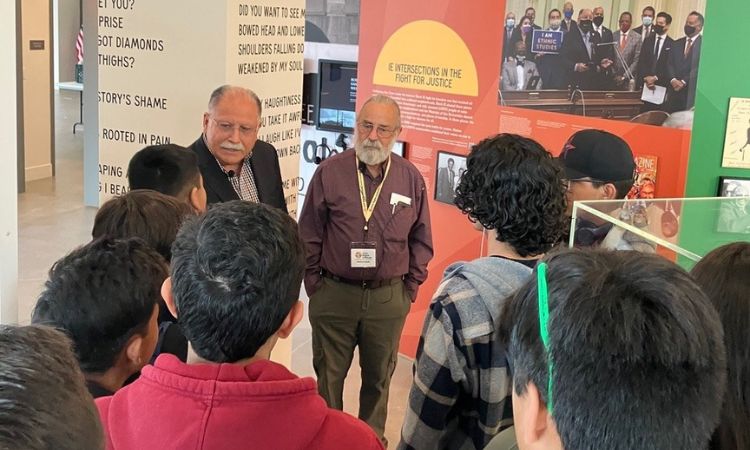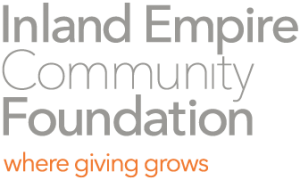 In just a short period, The Civil Rights Institute of Inland Southern California has emerged as a vibrant force. The nonprofit is dedicated to providing various public programs that focus on civil rights and the region’s civil rights history. Thus far, the organization has been successful in illuminating the lived experiences of residents in the area through oral history projects, archival initiatives, and celebrating the region’s civil rights leaders.
In just a short period, The Civil Rights Institute of Inland Southern California has emerged as a vibrant force. The nonprofit is dedicated to providing various public programs that focus on civil rights and the region’s civil rights history. Thus far, the organization has been successful in illuminating the lived experiences of residents in the area through oral history projects, archival initiatives, and celebrating the region’s civil rights leaders.
For Executive Director Sabrina Gonzalez, the journey is just beginning.
“I think it’s really hard to explain a multi-use space,” Gonzalez says of the organization’s locale on Mission Inn Avenue in Riverside which sits in a 92,000-square-foot facility. “People drive by it, they see us, but they don’t know what we do. So, we’re going to showcase the multitude of items and components that we bring as a civil rights institute.”
She goes on to note that some people may see the organization’s name and think of legal services or a resource center. But the nonprofit is more than that.
“We want to be the voice of the region,” Gonzalez says. “I think a lot of people come in and are very shocked to find out that our exhibit space is covering so much history, and they don’t realize that it’s all from our region. For us, it’s a way to highlight the many things we’re doing—from oral histories to exhibits to programming to being a space for discourse and difficult conversations. It’s exciting to showcase it in this way.”
The organization launched last year with a thought-provoking exhibit, “Still I Rise,” which examines the lived experience of Black residents of the Inland Empire, from the Great Migration to the present day. Themes of Black self-reliance, home, work, education, policing, and intersectionalism all filtered into the creative mix of the exhibit, which was designed to “bear witness to the adversity and discrimination faced by the Black community, and the strategies they used to thrive in the face of adversity.”
One major highlight of the exhibition is three interactive story maps, which feature sound and video components to assist visitors in understanding the development and growth of Black communities in the area. Spotlighting local civil rights leaders who advocated for equity in education, jobs, housing, politics, and leisure is also key.
Other standouts include the organization’s “Hall of Fame,” which focuses on trailblazers who have lived or worked in Inland Southern California, highlighting their regional, statewide, national, or international impact on the issue of civil rights.
Noteworthy individuals include Eliza Tibbets, who, along with 70 women in 1871, tried to register and vote under a new law that enfranchised citizens in Washington D.C. Tibbets went on to nurture the navel orange trees that sprouted the region’s citrus industry. John Sotelo is also featured. Sotelo was instrumental in establishing a multi-ethnic coalition of citizens in the area. He eventually became the first Mexican American elected to the Riverside City Council in 1963. There are dozens of other trailblazers.
Recently, the Civil Rights Institute of Inland Southern California received a grant from the Inland Empire Community Foundation through the Creative Corps Inland SoCal Program, which offers grants to local, regional, and statewide organizations in 58 counties for unemployed and underemployed artists. The grants allow artists to create public awareness messages and projects in support of civic engagement and community participation.
“The grant is huge for us to continue to do our work to bring regional exhibits to the community,” Sabrina Gonzalez says. It also allows us to build a Homegrown Heroes oral history project. It’s something that the visionaries and board members have had an eye on since the very beginning.”
To that end, the organization will be selecting 25 community leaders. Gonzalez says the titling a civil rights leader is unique in that, “some of these individuals we’re hoping to interview probably wouldn’t call themselves civil rights leaders. But we think their work is so important. It will allow us to start that oral history project and then move forward to turning that into one part of a bigger exhibit.”
Gonzalez has been with the organization for 16 months now and finds value in being able to inspire and honor the work of the community.
“There are so many people that come in regularly that tell us they had no idea we were in the area,” she adds. “We’re labeled as truth-tellers and a voice of the work that’s being done in the region. That’s very exciting to me, to be able to continue to champion, tell stories, and to recognize that we’re not trying to be L.A. or San Diego, but that we have a lot of strengths. And we need more people to own that and to continue to move them forward.”
This story originally appeared in the Press Enterprise October 2023..
Learn more about the good work we’re doing at IECF through the power of philanthropy. Subscribe to our free monthly eNewsletter, Philanthropy Matters.


